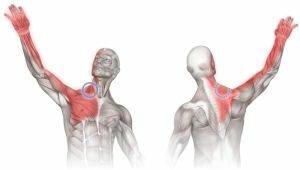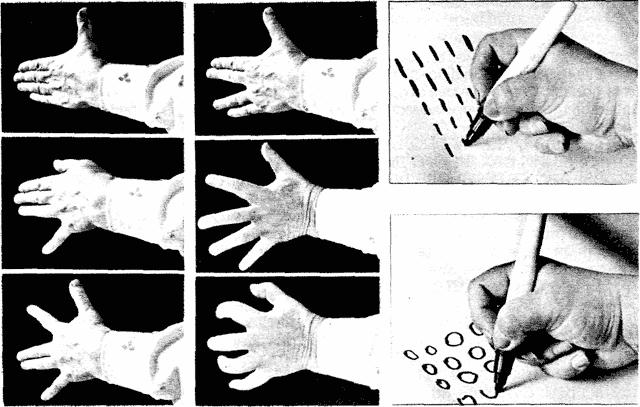 Plexitis is a fairly common disorder that involves the defeat of the nervous system, it is accompanied by very unpleasant symptoms and can lead to serious health consequences.
Plexitis is a fairly common disorder that involves the defeat of the nervous system, it is accompanied by very unpleasant symptoms and can lead to serious health consequences.
To cope with this disease, you need to consult a doctor in a timely manner and clearly follow all of its recommendations.
Contents
- Features of the disease
- Development mechanism
- What could be the reason?
- Localization of lesions
- Clinical picture and manifestations of
- Diagnosis of
- Therapeutic package of
- As an output of
Features of the disease
Plexitis means inflammatory lesions of one or more plexuses - cervical, lumbosacral or in the shoulder joint region.
Plexus data are responsible for the transmission of nerve impulses and are responsible for providing sensitivity and motor activity. If they are affected, the functioning of certain parts of the body is disrupted and pain syndrome appears. In most cases, people suffer from shoulder plexitis.
With the development of this disorder, there is a loss of functions that enter the plexus of nerve trunks. This manifests itself in the form of various paresis, atrophy and hypotonia of muscle tissue, the absence of tendon reflexes, trophic and nervous disorders.
To make an accurate diagnosis, the doctor examines the clinical picture and studies the history data, and also applies instrumental studies. The choice of the therapy scheme is affected by the origin of the lesion. Most often, conservative methods are used.
Development mechanism
In most cases, plexitis has a one-sided nature and passes through several stages in its development. Thus, in the neuralgic stage, the main symptoms are plexalgia. In this case, the pain syndrome appears in the nerve plexus and gives to the peripheral part of the  nerve trunks.
nerve trunks.
The disease then passes into a paralytic stage, which is accompanied by symptoms of loss of nerve function. In this case, paralysis and paresis are observed in a person, hypotension and muscle tissue hypotrophy develop, and tendon reflexes fall out. In the affected areas, sensitivity disorders and trophic disorders may occur.
Subsequently, the plexitis passes into the recovery stage, which can last a whole year. The degree of restoration of functions can be different. If this occurs only partially, the patient retains muscle atrophy, persistent paresis and articular contractures.
What could be the reason?
Traumatic damage plays a key role in the development of plexitis. The disease can develop as a reaction to a strong punch in the area of the plexus. Also, it can result in gunshot or stab wounds, dislocations, fractures of bones.
Posttraumatic plexitis is often observed in the practice of obstetricians and neonatologists. In this case, it becomes a consequence of birth trauma.
Other factors that can cause plexitis include the following:
- tumor formation or enlarged lymph nodes;
- pathology of the development of the spine;
- scoliosis;
- supercooling;
- some infectious diseases - influenza, syphilis, tuberculosis;
- autoimmune pathologies;
- metabolic disorders - gout, diabetes mellitus.
Sometimes inflammatory lesions are caused to the sacral or coccygeal form of the disease - in particular, cystitis, salpingitis, adnexitis.
Thrombophlebitis of pelvic veins may also be a provoking factor. To the cervical form of the disease leads an aneurysm of the subclavian artery. In addition, the cause may lie in the additional cervical rib.
Localization of lesions
Depending on the location of the pathological process, the following varieties of plexitis are distinguished:
- Cervical - thus there is a painful syndrome in the nape of the neck. In later stages paralysis or paresis of
 of affected muscles may develop. In some cases, this form of ailment provokes hiccups - this is due to irritation of the diaphragmatic nerve.
of affected muscles may develop. In some cases, this form of ailment provokes hiccups - this is due to irritation of the diaphragmatic nerve. - Shoulder - in this case, the discomfort is felt in the area of the clavicle and gives into the hand. There may also be a violation of skin sensitivity. This reduces muscle strength and reflexes in the region of the shoulder girdle and arms. As for the trophic signs, they manifest themselves in the form of a cyanotic hand on the affected side. Also, the sweating of the palms often increases.
- Lumbosacral .When localizing the abnormal process in the lumbosacral plexus, all of the above symptoms occur in the legs. As the disease progresses, paresis and paralysis of some groups of leg muscular tissue appear. There may also be trophic disorders.
In this inflammation can have a total nature, which affects the entire plexus, and partial - in this case, only some branches and trunks suffer. Also, doctors single out a one-sided and two-sided form of the disease.
 In its development, plexitis passes through 2 stages. At the first stage, which is called the neurological, there are spontaneous painful sensations in the region of the affected plexus. They can build up when moving and do not pass in a quiet state. Thus the person complains of a pricking, lethargy or intensity of a muscular fabric, coldness of integuments.
In its development, plexitis passes through 2 stages. At the first stage, which is called the neurological, there are spontaneous painful sensations in the region of the affected plexus. They can build up when moving and do not pass in a quiet state. Thus the person complains of a pricking, lethargy or intensity of a muscular fabric, coldness of integuments.
If the treatment does not start on time, the second stage of the disease begins. In this case, a man has mono paresis and paralysis in the zone, the innervation of which corresponds to the affected plexus. In addition, in this area, sensitivity decreases and trophic disorders occur, which manifest themselves in the appearance of edema and changes in hue and turgor of the skin.
Clinical picture and manifestations of
Symptoms of plexitis directly depend on its shape:
- So, cervical plexitis is accompanied by diffuse pains, which are located on the anterolateral surface and render into the ear and occipital area. With the stimulation of nerve fibers, a muscle-tonic syndrome may appear, which manifests itself in the form of spastic tortoise. The paralytic stage is accompanied by paresis of the diaphragm and atrophy of the muscular tissue of the neck.

- The lesion of the brachial plexus can take many forms. So, doctors distinguish the upper, lower and total form of the disease. The total plexitis is characterized by painful sensations throughout the arm, which have symptoms of sympathy. There may also be flaccid paresis and atrophy of the muscles of the arm and shoulder.
- For lumbar , a disorder characterized by plexalgia, in which pain is given to the front of the thigh and buttocks. In this case, the motor activity of the hip and knee is broken, and therefore it is difficult for a person to move around and even stand. The muscles of the buttocks and thighs are subject to atrophic changes. Also, the knee joint often develops contracture.
- Sacrificial plexitis is often combined with lumbar. In this case, there is a pain syndrome in the region of the sacrum, which gives in the leg. Trigger points also appear in the direction of the gluteal and sciatic nerves. With this form of illness there is no anal reflex, there are disorders of urination, defecation and sexual function.
Diagnosis of
To make an accurate diagnosis, the physician should study the history and perform a neurological examination. Also, the specialist determines the muscle groups that have a decreased strength. To clarify the diagnosis will help conduct electroneuromyography.
In some cases, such procedures are required:
- consultation of narrow specialists - urologist, orthopedist, traumatologist, oncologist;
- radiography;
- computed tomography;
- of a small pelvic ultrasound.
Complex of therapeutic measures
To cope with plexitis, most often prescribe conservative treatment, which includes such components:
- the doctor can prescribe glucocorticosteroids, non-steroidal anti-inflammatory drugs, muscle relaxants, chondroprotectors,
 antidepressants, anticholinesterase drugs;
antidepressants, anticholinesterase drugs; - topical injection therapy;
- chiropractic;
- physiotherapy;
- reflexotherapy;
- kinesitherapy.
The use of medicines is aimed at reducing pain. For this purpose, most often prescribed funds that have chondroprotective characteristics. To  such drugs include Nimesulid, Aceclofenac. To cope with acute pain syndrome, use drugs with analgesic effect.
such drugs include Nimesulid, Aceclofenac. To cope with acute pain syndrome, use drugs with analgesic effect.
Quite often, blockades with glucocortecosteroids are used. If the pain is neuropathic, the use of gabapentin and pregabalin is indicated. In addition, antidepressants, muscle relaxants, and local anesthetics can be used.
If conservative therapy does not give the desired results within 6-12 months, an operative intervention is indicated.
As an output of
To prevent the development of a traumatic form of the disease, it is necessary to engage in the prevention of injuries. This is especially true for athletes.
To prevent the development of plexitis in newborns, it is important to properly manage pregnancy and adequately approach the issue of choosing the method of delivery. To prevent the development of an infectious form of the disease will help timely treatment of infectious pathologies.
If the treatment is not started on time, the plexitis does not have a very favorable course. In this case, the probability of residual phenomena - contractures and pareses is high. All this leads to a person's disability.
Plexitis is a serious enough disease, which is accompanied by severe pain syndrome and significantly reduces the quality of life. In order not to allow unpleasant consequences, it is very important to consult a doctor in time, who will select adequate therapy.



